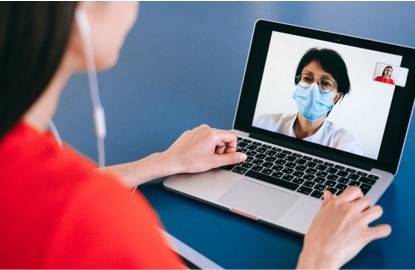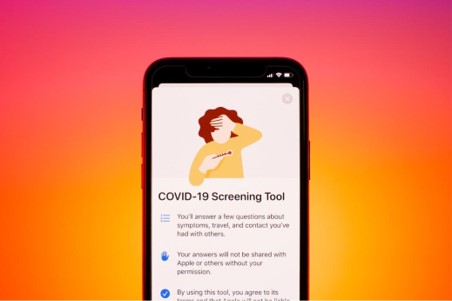
In just 2018, almost 40 percent of doctors said they didn’t intend on offering telehealth services. Now, telemedicine has been a critical tool for doctors to stay in touch with their patients and screen individuals for coronavirus amidst the pandemic.
Telemedicine visits increased by 50 percent in the United States during the first quarter of 2020 compared to the same period in 2019, the Centers for Disease Control and Prevention reports.
Unsurprisingly, many experts predict these trends will continue to increase or remain at their current elevated rates. While a large portion of these telemedicine patients could opt for in-person visits once the pandemic ends, many will continue using telemedicine.
Why? Telemedicine offers a more convenient, accessible, and flexible route to achieving better health in the digital age.
What is Telemedicine?
The CDC defines telemedicine as “the use of two-way telecommunication technologies to provide clinical health care through a variety of remote methods.”
Most physicians use a web or app-based video call service to host their appointments virtually rather than in-person. Some doctors may also opt to hold the appointment over a traditional telephone call, as well.
To let your patients know you offer telemedicine services, we recommend that doctors use a trusted blogger outreach agency. Their highly-trained writers can help you craft an elegant site that accurately reflects your practice.
How Telemedicine is Making Healthcare More Convenient
1. Telehealth Appointments Keep Everyone Safe and Sanitary

Source: Unsplash
Until there’s a safe and effective treatment for COVID-19, our only protection against this virus is staying home and washing our hands.
Telemedicine appointments allow you to avoid leaving the house unnecessarily. That isn’t to say that leaving the house for your health is frivolous. Rather, many conditions don’t require a physical examination for your doctor to diagnose or treat.
Plus, telemedicine appointments are great for those who may feel anxious about seeing their doctor at a hospital in areas where coronavirus cases are particularly high.
COVID-19 provides the most apparent example of how telehealth helps boost patient and doctor safety at the moment. However, there are other highly-contagious diseases telemedicine could assist in the treatment of, as well.
2. Your Doctor is Always Just a Click Away

Source: Pexels
Regardless of where you are — whether you’re on the go or at home — your doctor is always just a click away with telemedicine.
A variety of telehealth platforms offer patient portals that allow you to send instant messages to your doctor’s office. If you have a question for your care provider, you don’t even need to schedule an appointment. You can simply leave them a message and decide from there whether a more in-depth follow-up is needed.
3. Telemedicine Offers More Scheduling Options to Patients and Doctors

Source: Pexels
Telehealth, by nature, is incredibly flexible. Not only can you contact your doctor from anywhere in the world, but telemedicine offers you and your doctor more control over your schedules.
Even if you live relatively close to your doctor, it still takes time to get ready, drive there, find parking, and locate their office. Then, you have to fill out a few pages of forms and spend about 20 minutes in the waiting room, only to wait some more once you’re finally called back.
Doctors can choose to take telemedicine appointments between in-person visits or take them from home during days where the office is closed for maintenance.
Likewise, you have the option of making your telemedicine appointment whenever it works best for you. That could be during your lunch break while working from home, later in the evening, or even during the weekend.
4. Telemedicine Saves Everybody Time
Adding to our last point, telemedicine saves doctors and their patients a tremendous amount of time. You can chat with your doctor in real-time via instant messages or over the phone, rather than waiting days for a callback.
Telemedicine appointments also streamline the entire process of seeing your doctor. You’re able to fill out your patient forms days in advance, you don’t have to leave your home to see them, and you don’t have to waste time in the waiting room, either.
An American Well survey found the average telemedicine appointment takes about 15 minutes, whereas an in-person visit takes about two hours. That’s a significant time difference.
5. Virtual Appointments Expand Doctors’ Reach Significantly
There are serious healthcare disparities between rural and urban America. According to the CDC, rural Americans are at a greater risk of death from the five leading causes than urban Americans. These causes include:
- Heart disease
- Cancer
- Unintentional injury
- Chronic lower respiratory disease
- Stroke
Various environmental and lifestyle conditions put this population at an increased risk for these ailments. But it doesn’t help that 20 percent of America lives in rural areas, and only nine percent of physicians practice in rural communities either, a Western Journal of Medicine study notes.
Telemedicine allows more healthcare providers to reach these rural communities where healthcare access is limited. Although it doesn’t completely resolve the lack of healthcare services in these parts of the country, it’s far better than offering no care to these communities at all.
Conclusion
Telemedicine visits have skyrocketed due to the coronavirus pandemic. However, these trends will likely continue after the pandemic because telemedicine is at the cornerstone of better, more accessible, convenient healthcare in the 21st century.
References
- “Slight increase in the number of practices offering telehealth services” via the Medical Group Management Association
- “Trends in the Use of Telehealth During the Emergence of the COVID-19 Pandemic” via the Centers for Disease Control and Prevention
- “Is the telehealth boom set to continue in 2021? Congress and consumers will help decide” via the Medical Group Management Association
- “Social Distancing” via the Centers for Disease Control and Prevention
- “Handwashing” via the Centers For Disease Control and Prevention
- “Patient wait times show notable impact on satisfaction scores, Vitals study shows” via Healthcare Finance News
- “Telehealth Index: 2017 Consumer Survey” via American Well
- “About Rural Health” via the Centers For Disease Control and Prevention
- “Physicians and rural America” via the Western Journal of Medicine




Facebook Comments